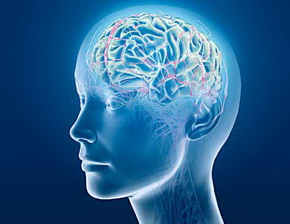Our brain and spinal column are the control center of our body. If these become damaged or altered, it can affect us in a variety of ways. With modern technology, our understanding of these effects is never-ending...
Neurological Diseases
Neurological diseases are basically disorders or abnormalities in the structure and function of the body’s nervous system including the brain, the spinal cord and the neurons throughout the body. Since the nervous system controls all the activities of the body, both voluntary and involuntary, any abnormalities in its physical, biochemical or electrical activities can cause symptoms like poor co-ordination, sensation losses, pain, confusions, memory losses, seizures, paralysis, etc. Most of the common neurological diseases have no cure and can only be made less severe with interventions like physiotherapy, pain management, lifestyle changes, and medication, surgery, neuro-rehabilitation and preventative measures.
Causes:
The causes of different neurological diseases are different although the main causes are broadly classified as the below. The exact cause of most of these disorders is yet being studied.
- Genetic: These are hereditary in nature and examples include muscular dystrophy and Huntington’s disease.
- Degenerative: Here, the nerve cells or neurons are damaged or dead. Alzhiemer’s disease and Parkinson’s disease are the most common examples.
- Vascular: These are disorders in the blood vessels supplying blood to the brain. Example: stroke.
- Spinal or brain injuries
- Infections: Caused by viruses or bacteria that affect parts of the nervous system. Example: Meningitis
- Cancer: Brain tumors causing cancer
- Seizure disorders like epilepsy
Prevalence:
The occurrence of various neurological diseases varies- some are common while some are rare. Some of the commonly ones include Parkinson’s Disease, Huntington’s disease, cerebral palsy, Multiple Sclerosis and migraine. More than one billion people all over the world suffer from one neurological problem or another.
Onset:
- While some neurological disorders develop during early childhood or even earlier-during pregnancy (example: cerebral palsy).
- There are many neuro-disorders that occur at an old age of beyond 60 years (examples: Parkinson’s disease, Alzhiemer’s Disease).
- Many others like Multiple Sclerosis, Huntington’s Disease, migraines, etc develop between young and middle ages from 15 to 55.
- In fact, there is no fixed age for the onset of most diseases, for example, though Alzheimer’s generally occurs after 60, there have been many people in their 40s who have been diagnosed with the condition.
Treatment:
- The type of treatment that is delivered to patients suffering from different types of neurological diseases varies in accordance with the type and severity of the condition.
- The team that provides intervention to these diseases includes physical therapist, speech therapists, neurosurgeons, medical practitioners and psychologists.
- The patients who are suffering from certain deficits due to neurological conditions have some devices like eyeglasses, wheelchairs, braces, etc that are provided for them.
- Surgeries and medication do work in many cases.
- However, there are many diseases that are ultimately fatal. These are the ones that have no cure as such. They extend for many years and with treatment of certain drugs, their symptoms can be reduced and be made less severe. However, as such, there is no existing treatment that can bring those people suffering from these diseases to get rid of them completely. Promising research is being carried out considering the immense quantity of people who are being affected by them.

- Home
- Acupuncture Therapy For Neurological Diseases
- Chronic Neurological Diseases
- Common Neurological Diseases
- Degenerative Neurological Diseases
- Equine Neurological Diseases
- Fatal Neurological Diseases
- Genetic Neurological Diseases
- Hereditary Neurological Diseases
- List Of Neurological Diseases
- Most Common Neurological Diseases
- Neuro-Infectious Diseases
- Neurological Autoimmune Diseases
- Neurological Degenerative Diseases
- Neurological Diseases In Children
- Neurological Diseases In Dogs
- Neurological Diseases In Horses
- Neurological Disorders Brain Diseases
- Neurological Genetic Diseases
- Neurological Symptoms
- Neurological System Disorders
- Pediatric Neurological Diseases
- Rare Neurological Diseases
- Symptoms Of Neurological Diseases
- Treatment Of Neurological Diseases
- Types Of Neurological Diseases
